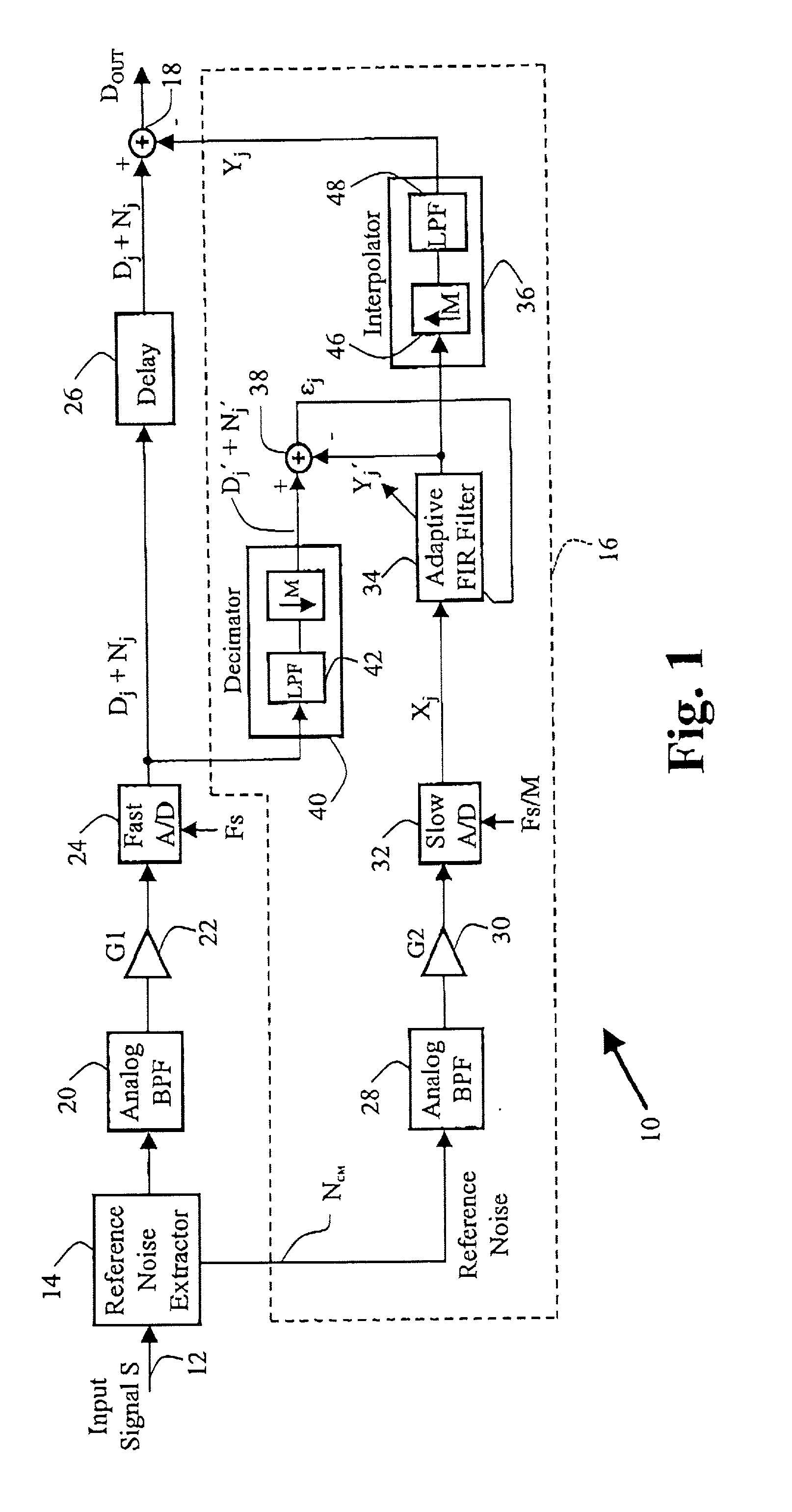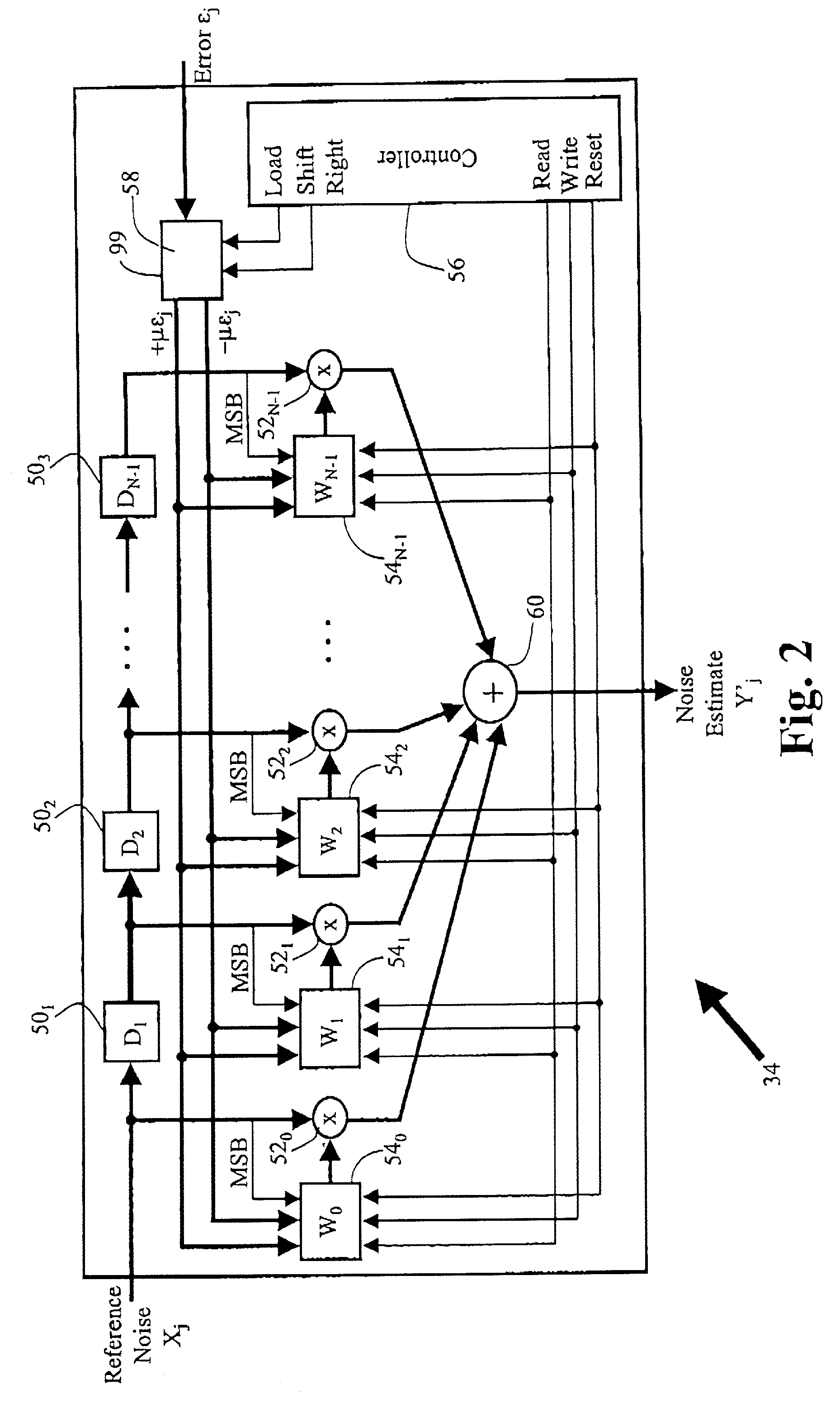Noise/interference suppression system
a suppression system and noise technology, applied in the field of noise/interference suppression systems, can solve the problems of unbalanced circuits, computational intensive, and inability to meet high frequency use, and achieve the effect of suppressing noise in communications signals
- Summary
- Abstract
- Description
- Claims
- Application Information
AI Technical Summary
Benefits of technology
Problems solved by technology
Method used
Image
Examples
Embodiment Construction
[0039] In the drawings, identical or corresponding components in the different Figures have the same reference numbers.
[0040] In FIG. 1, a noise suppression circuit 10 portion of a receiver is shown connected to a communications channel 12 by way of a noise reference signal extraction circuit 14. Where the communications channel 12 is, for example, a twisted-pair subscriber loop, the noise reference extraction circuit 14 might be a hybrid transformer having a centre-tapped primary winding connected to the TIP and RING of the twisted pair and the tap providing the reference noise signal. In addition to the received information signal, the input signal S comprises common mode noise, specifically radio frequency interference injected into the communications channel 12 as a common mode signal which is converted into differential mode current and detected as noise by the receiver. Typically, in a subscriber loop, the radio frequency signals are from commercial AM radio stations and withi...
PUM
 Login to View More
Login to View More Abstract
Description
Claims
Application Information
 Login to View More
Login to View More - R&D
- Intellectual Property
- Life Sciences
- Materials
- Tech Scout
- Unparalleled Data Quality
- Higher Quality Content
- 60% Fewer Hallucinations
Browse by: Latest US Patents, China's latest patents, Technical Efficacy Thesaurus, Application Domain, Technology Topic, Popular Technical Reports.
© 2025 PatSnap. All rights reserved.Legal|Privacy policy|Modern Slavery Act Transparency Statement|Sitemap|About US| Contact US: help@patsnap.com



